Yesterday the city council in Cincinnati, Ohio approved a resolution to move the city to 100% renewable energy by 2035, following on an earlier commitment to move the city’s municipal operations to 100% renewables. This new move will include the power for all city fleets.
Cincinnati has only 300,000 residents, and as such this announcement on its own will not sway the future of the U.S. electric supply. However, Cincinnati is also the 100th municipality to either achieve 100% renewables in its electricity supply or to set a goal for 100%.
This includes the cities of San Jose and San Diego, California, each of which are home to more than one million residents. And this is in addition to a 100% renewable energy mandate in Hawaii and California’s mandate for full decarbonization of electricity, with both setting a target date of 2045.
Sierra Club estimates that 48.7 million people, or 15% of the U.S. population, live in cities or states that have set a 100% mandate. This is in addition to more than 34 million who live in Washington D.C. and four states that have pledged to reach at least 50% renewable energy by 2040 or sooner.
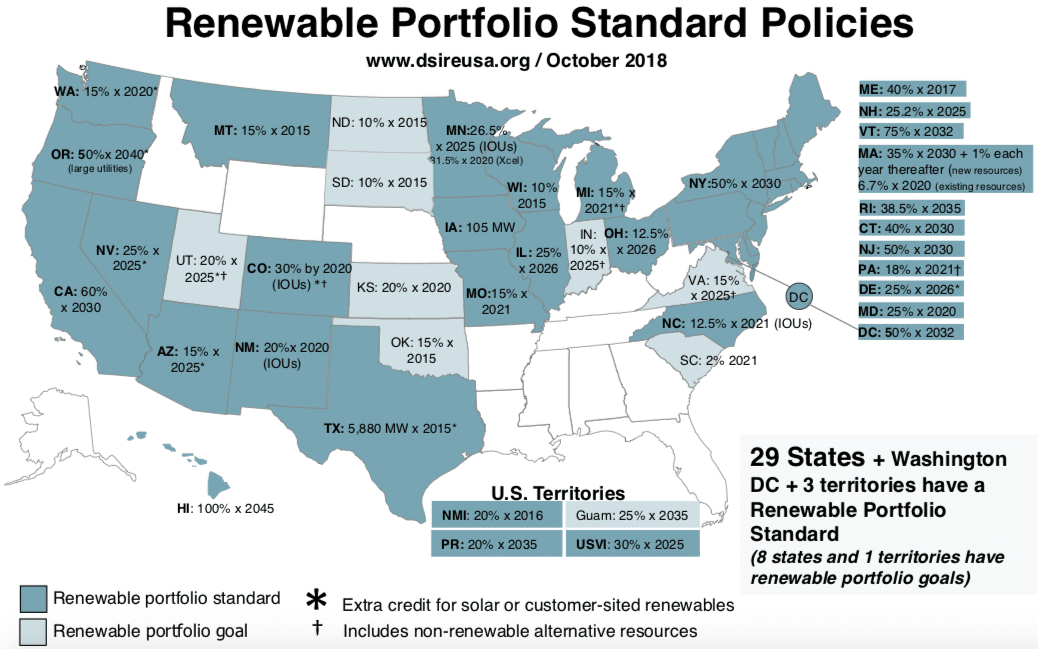
This action by cities and states is a sharp rebuke to the Trump Administration’s departure from the Paris Agreement and attempts to revive the failing coal industry. Additionally, the 2018 mid-term elections brought to Congress a new group of Democratic politicians who have led a movement calling for the entire nation to move to 100% renewable energy by 2030.
The opportunities here for the solar, wind and battery storage industries are massive, as to reach even 80% by 2030 could require an average of around 100 GW of combined wind and solar deployments each year for the next 10 years, or 5x the current level.
Fighting over the details
From here, the debate is likely to shift away from whether or not electricity will be decarbonized. It is about when and how fast this will happen, as well as what resources will be included.
This could be seen recently with Xcel Energy, whose plan to move to 100% zero-carbon electricity by 2050 is ten years slower than what Colorado Governor-elect Jared Polis is calling for. Additionally, unlike Polis Xcel is calling for “zero-carbon” electricity, not specifically renewables, which could provide space for two nuclear power plants that it owns in Minnesota.
California also requires only zero-carbon electricity to meet its 2045 mandate, but the difference at this point is somewhat academic. This is in large part because nuclear plants have take an average of 10 years to build in the United States, and no new nuclear plants are planned in California.
The nuclear industry and its advocates will fight tooth and nail to ensure that new mandates are not limited to renewables. However, the critical detail for whether new nuclear will be built will likely be the timing. The nuclear technologies which are currently commercially available cannot compete with large-scale solar and wind on cost, and if political jurisdictions move to 100% zero-carbon electricity by 2030, then this does not leave much time for new nuclear technologies to be commercialized and deployed.
The other great conflict that is likely to be seen is between whether we deploy utility-scale and distributed solar. Many utilities have warmed to large-scale renewables, as they do not threaten their investment in transmission and distribution (T&D) infrastructure. However, they consistently remain hostile to customer- and third-party owned rooftop solar. Such distributed generation is not only preferred by many homeowners, but also provides additional value, including saving ratepayers substantial money on deferred T&D and the promise of a far more reliable grid.
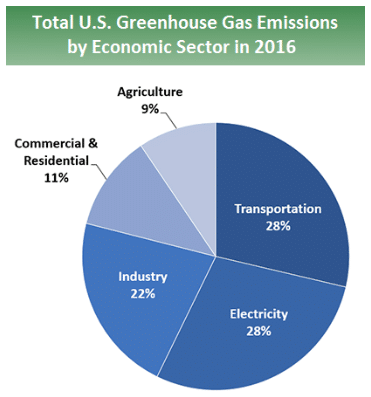 As these fights play out, it is likely that there will be an increased focus on changes in the transportation sector. Transportation has barely edged out electricity and is already the largest source of greenhouse gas emissions in the United States, and the electrification of transportation could have a major impact not only on the raw volume of electricity demand that will be met, but the details of how we integrate high levels of renewable energy.
As these fights play out, it is likely that there will be an increased focus on changes in the transportation sector. Transportation has barely edged out electricity and is already the largest source of greenhouse gas emissions in the United States, and the electrification of transportation could have a major impact not only on the raw volume of electricity demand that will be met, but the details of how we integrate high levels of renewable energy.
The world is changing. Fast.
This content is protected by copyright and may not be reused. If you want to cooperate with us and would like to reuse some of our content, please contact: editors@pv-magazine.com.
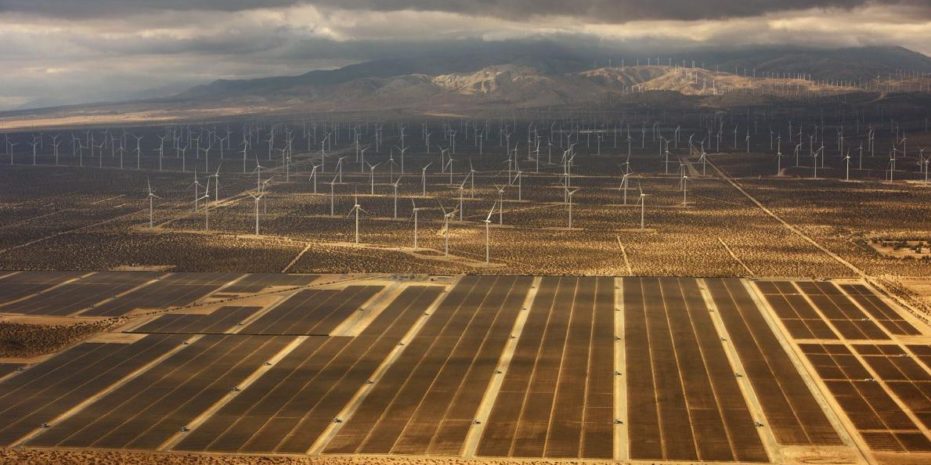





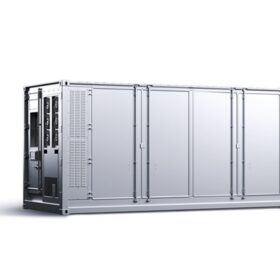
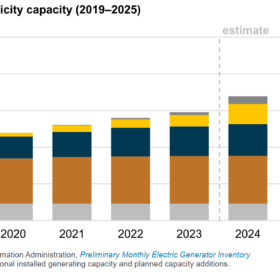
Have you wizards of science and math bothered to figure out how much land is required for 100% renewable? It is staggering. So is the amount of money to carry out the lunatic plan.
Quite clearly, the renewable energy religion does not give a damm about the environment nor the hapless consumer and taxpayer who are forced to line the pockets of the elite.
Thank you for the opportunity to explicitly debunk some of the common mythologies around renewable energy.
1) While the amount of space per unit of energy delivered needed for solar and wind is greater than that used by conventional power, it is still a very small portion of the overall land space in the United States. Furthermore, solar can be put on rooftops and building facades, wind can be co-located with timber land, and both wind and solar can be successfully co-located with farming and ranching.
In fact, it may work better that way: https://pv-magazine-usa.com/2018/11/12/solar-panel-increase-sheep-and-cow-grasses-by-90/
2) Large-scale solar and wind are the cheapest forms of new electricity available.
https://pv-magazine-usa.com/2018/11/09/lazards-lazards-lcoe-whos-the-cheapest-energy/
3) Rooftop solar and batteries are saving utility customers money due to less of a need for long-distance transmission.
https://pv-magazine-usa.com/2018/03/27/distributed-solar-and-efficiency-saves-california-2-6-billion-on-power-lines/
It’s not of course a target of 100% renewable *energy* but merely 100% renewable *electricity*. That’s worth having, but only gets the city as a community a third of the way. Zero emissions in heating, industry and transport is much more difficult. The shift to all-electric transport in particular will require much more political capital and leadership. Start by looking at London’s ULEZ.
Once you have zero-emissons electricity, zero emissions in heating is easy. Use electric heat. Same with most of industry, though certain processes like steel and concrete are harder (but both are already being done by specialty steel and concrete makers)
I agree with Nathanael. Zero-emission electricity is the first very important step toward zero emissions heating capabilities. Yes, there will be challenges, but they are surmountable for sure!